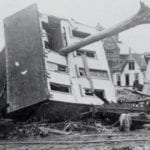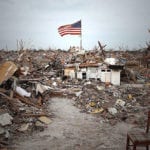 Miscellaneous
Miscellaneous  Miscellaneous
Miscellaneous  Gaming
Gaming 10 Funny Tutorials in Games
 History
History 10 Fascinating Little-Known Events in Mexican History
 Facts
Facts 10 Things You May Not Know about the Statue of Liberty
 Movies and TV
Movies and TV 10 Movie Adaptions That Brought Popular Songs to Life
 Health
Health 10 Miraculous Advances Toward Curing Incurable Diseases
 Miscellaneous
Miscellaneous 10 Undeniable Signs That People’s Views of Mushrooms Are Changing
 Animals
Animals 10 Strange Attempts to Smuggle Animals
 Travel
Travel 10 Natural Rock Formations That Will Make You Do a Double Take
 Movies and TV
Movies and TV 10 Actors Hidden in Your Favorite Movies
 Miscellaneous
Miscellaneous 10 Interesting Things Manufacturers Stopped Making and Why
 Gaming
Gaming 10 Funny Tutorials in Games
 History
History 10 Fascinating Little-Known Events in Mexican History
Who's Behind Listverse?

Jamie Frater
Head Editor
Jamie founded Listverse due to an insatiable desire to share fascinating, obscure, and bizarre facts. He has been a guest speaker on numerous national radio and television stations and is a five time published author.
More About Us Facts
Facts 10 Things You May Not Know about the Statue of Liberty
 Movies and TV
Movies and TV 10 Movie Adaptions That Brought Popular Songs to Life
 Health
Health 10 Miraculous Advances Toward Curing Incurable Diseases
 Miscellaneous
Miscellaneous 10 Undeniable Signs That People’s Views of Mushrooms Are Changing
 Animals
Animals 10 Strange Attempts to Smuggle Animals
 Travel
Travel 10 Natural Rock Formations That Will Make You Do a Double Take
 Movies and TV
Movies and TV 10 Actors Hidden in Your Favorite Movies
10 Epic Russian Military Disasters
It’s impossible not to marvel at Russian resiliency. For 1,000 years Russia has survived in one form or another. Though even a quick review of its military history raises one important question: how?
10The Battle Of Kalka River
1223
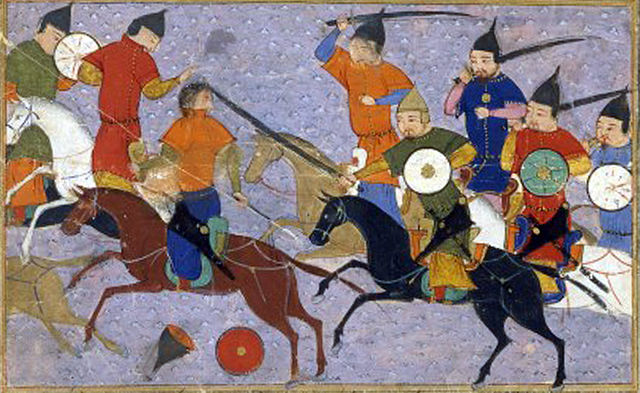
Russia’s historical predecessor was a state—really more of a loose confederation of princes—known as Kievan Rus, centered around what is now Kiev, Ukraine. During the early 1220s, the Mongols expanded rapidly westward towards Russia, rolling over the smaller kingdoms in their way. Remnants of those kingdoms sought aid from the Russians and described the growing Mongol threat. Shortly thereafter, Mongol ambassadors arrived at the Russian court seeking a peaceful accord. The Russians responded by killing the Mongol messengers.
Not realizing just what they were dealing with, the Russian princes assembled what they thought was a formidable army capable of stopping the Mongols. And their first battle was actually an overwhelming success, putting the invaders on the run.
Worried that the war would end before they got to kill some Mongols themselves, the Russian nobility began a reckless pursuit of the retreating army. For nine days, they chased the enemy horsemen—who led their pursuers right into the heart of the main Mongol army, which had been lying in wait the whole time. The overconfident, disorganized Russian army was no match for their ambushers. When one of the leading Russian princes surrendered, the Mongols gladly accepted, then slaughtered him and his army. As for the captured nobility, the Mongols buried them alive under the floor of their mess tent, then had a feast on top of the vanquished. The centuries-old Kievan Rus never recovered from the dramatic loss of manpower and rapidly disintegrated in the decades which followed.
9Siege Of Moscow
1382
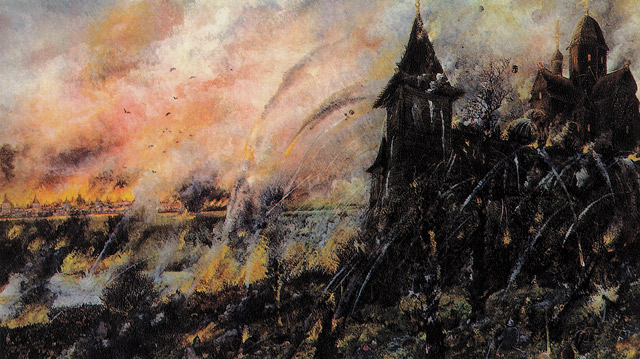
Kiev’s successor, Moscow, rose to prominence largely via its leaders’ submission to Mongol rule. For 140 years after Kalka River, the Mongols exacted tribute from the Russian principalities without any serious challenges. But as the 14th century drew to a close, Moscow flourished as a trading center, and its prince, Dmitry Donskoy, grew tired of being a Mongol lackey.
In 1378 and 1380, Donskoy defeated Mongol armies in the field—which just made them really, really angry. In 1382, an increasingly fractious Horde unleashed their attack dog on the rebellious Russians. As ruthless as his name is difficult to pronounce, Prince Tokhtamysh marched on Moscow, sending scouts ahead to murder merchants and travelers who might warn Donskoy. Along the way, a number of Russian princes made the smart bet and allied themselves with Tokhtamysh.
Shortly before Moscow was surrounded, Donskoy fled the city to gather reinforcements. For three days, 20,000 Muscovite defenders repulsed Tokhtamysh’s troops. On the fourth day, a seemingly exhausted Tokhtamysh appeared outside the city gates, waving a white flag of truce. Overjoyed at their good fortune, the city’s inhabitants dispatched a parade of envoys bearing gifts and tributes to the Mongol prince. But before peace negotiations could begin, Mongol swordsmen rushed out from their camp, slaughtered the procession and stormed through Moscow’s gates, laying waste to all inside. When Donskoy returned, he found a pile of charred rubble and corpses where his city used to be. Having lost everything, Donskoy and the remnants of his principality submitted to Mongol rule once again.
8The Capture Of Vasili II
1445
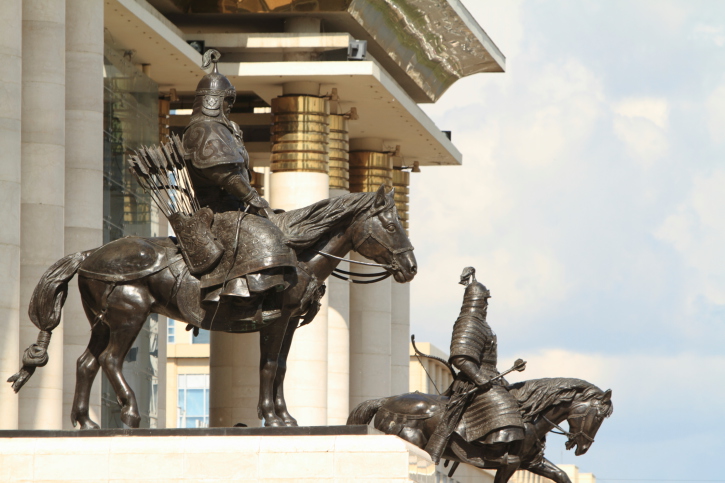
Dimitry Donskoy’s efforts revealed the weakening control of the Mongols, but there were still more missteps along the way to Muscovite independence. Take Vasili II. The Grand Prince of Moscow could scarcely maintain control of his city due to constant internal strife and neighboring Tatar groups raided the border with impunity.
In response to one such raid, Vasili assembled a response force 1,500 soldiers strong. To prove his detractors wrong—they said he was a weak and talentless leader—he decided to lead the army himself. Vasili’s scouts located the raiders and brought back great news: the enemy was just a small, disorganized rabble.
Imagine Vasili’s surprise the next morning when he found 3,500 heavily armed Tatars arrayed against him. Making the best of it, he seized the initiative and ordered an attack. The Russians fought well and forced the fabled warriors of the steppes to retreat. Excitement rippled through the ranks—they might actually win a famous victory.
As the Tatars fled, the Russian army broke rank and gave chase. And that’s when the Tatars stopped retreating and instead surrounded their now-disorganized enemy. The results were predictable: the “rabble” slaughtered Vasili’s troops, captured the prince himself, and made a fortune ransoming him back to Moscow.
7The False Dimitris
1598-1613
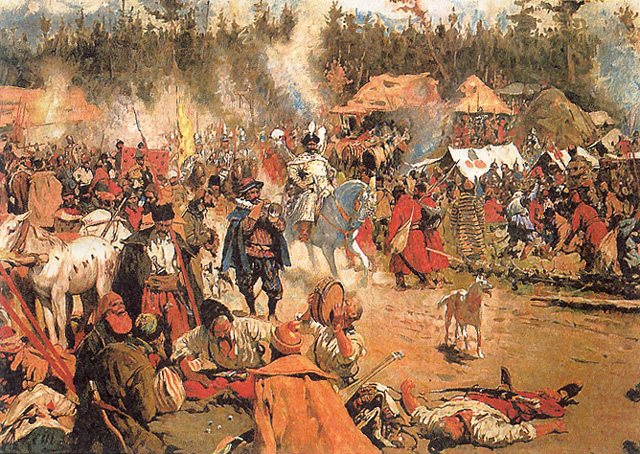
They didn’t call it “the Time of Troubles” for nothing. The troubles in question began in 1598, when the feeble Tsar Feodor I died without a successor. Amid a terrible famine, things got worse when Feodor’s half-brother, Dmitri, showed up to to claim the throne.
This was a particularly disturbing turn of events, since Dmitri had died in 1591. With Polish and Lithuanian backing, the false Dimitri succeeded in seizing the throne. In 1606, the imposter was assassinated by a nobleman named Vasilii Shuiskii, who crowned himself Tsar. Even though Shuiskii publicly displayed Dimitri’s naked corpse for three days, he failed to suppress rumors that the true Dimitri was still alive.
Naturally, a second Dmitri appeared and assembled a rebel army to challenge Shuiskii. Russia fell into civil war, which wound down only after Dmitri II was also assassinated.
While Russia imploded, its neighbors—Poland-Lithuania and Sweden—didn’t just stand idly by. Instead, they invaded, gaining large territories at Russia’s expense, as a thoroughly disorganized Russian army became an Eastern European punching bag, losing battles to enemies it outnumbered five times over. Matters were further complicated by the appearance of a third false Dimitri. Finally, the Russian nobility agreed they hated Poles and Swedes more than each other, and united to take Moscow back from Poland. There, they convened a national assembly of sorts, which elected Mikhail Romanov as the new Tsar of all Russians.
6The Crimean War
1853-1856
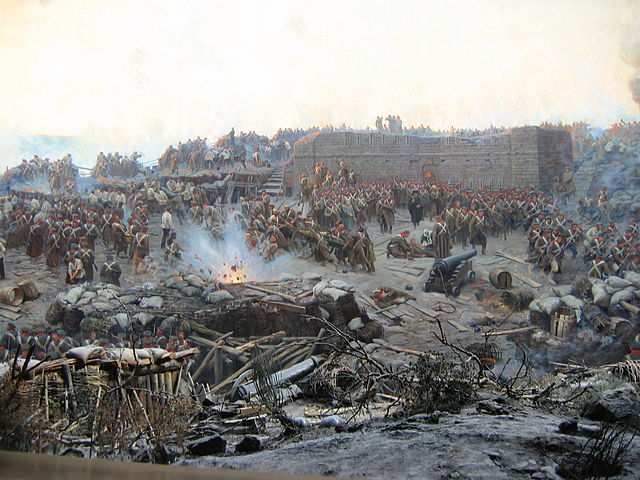
As the Ottoman Empire declined in the 19th century, Russia greedily eyed the sultanate’s territories, which would give Russia’s Black Sea fleet access to the Mediterranean. Publicly, Russia expressed concern for the well-being of Orthodox Christians living under Ottoman rule, In 1853, the Russian army invaded Turkey’s Balkan province of Moldavia. In response, Turkey declared war. France and Britain immediately followed suit to prevent Russia from taking over the world.
What followed was a contest of three terrible armies and one passable one (the French), of which Russia’s army was by far the worst. A sort of international school bully who couldn’t back up his boasts, Russia possessed the largest and least effective army of all the powers. Its troops were essentially slave-soldiers, armed with the latest 18th century technology—muskets which fired a quarter as far and half as fast as the Anglo-French rifles.
Generally, Crimea resembled the American Civil War: Napoleonic-era tactics with modern guns. And if the Russians specifically lacked modern guns, they certainly didn’t lack for outdated tactics—they got them first-hand from Field Marshal Ivan Paskevich, aged 72, and a veteran of the Napoleonic Wars.
Fortunately for Russia, its enemies were only powerful when combined, as each possessed only one truly effective arm: the British navy, the French army, and the Ottoman, artillery. Of course, Russia had numbers—and if Russia in the 1850s had the railroads or infrastructure to get those troops and supplies into the field, it might have been a different story. Nevertheless, Russia fielded enough cannon-fodder, and Allied officers led poorly enough, that a grinding stalemate was reached. In the process nearly a million Russians died, several times the figure for the Allies. The treaty terms forced Russia even farther from its Mediterranean dreams; after Crimea, the Allies dismantled the Russian Black Sea fleet.
5Battle Of Tsushima May
1905
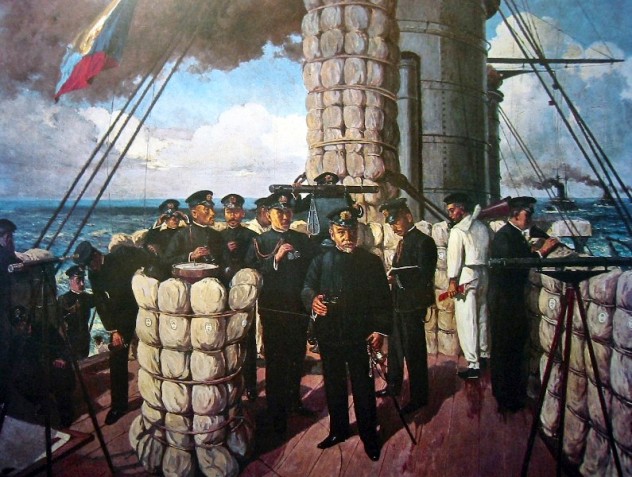
Russia’s ongoing search for warm-water ports took it all the way to Port Arthur (modern-day Lüshunkou), which it leased from China in 1898. The natural harbor, located just west of the Korean peninsula, might well have been Japan’s had a fleet of Russian warships not shown up off the Chinese coast to convince them Russia would a better tenant.
But Russia’s new sphere of influence threatened Japan’s hegemony in the region. So, in 1904, Japan besieged the Russian outpost at Port Arthur…before declaring war. The Russians needed reinforcements to lift the siege, but the nearest were in the Baltic Sea, 18,000 nautical miles away.
The fleet sailed in October and had to travel around Africa, since the British had barred them from the Suez Canal. From the outset, there was trouble. In the North Sea, a Russian cruiser inexplicably mistook British fishing ships for Japanese torpedo boats and fired on the fishermen. In the chaos, the Russians ended up shooting at each another for over 20 minutes and several Brits were killed in the crossfire. The fleet had to stop afterward to defuse the diplomatic incident.
Seven months later, the fleet neared Japan. Port Arthur had already fallen and the fleet’s new destination, Vladivostok, was much farther north. Rather than go around Japan’s east coast, the weary Russians chose the shortest possible course, through the narrow straits separating Japan and Korea. Japanese spotters reported on Russian progress via radio, ensuring Japan’s navy would be in prime position to stop them. The first shots fired from the Japanese battleships set fire to one Russian ship and badly injured the Russian Admiral. The poorly trained Russian sailors fell into disarray and Russian ships became floating targets for the Japanese gunners. Of the 34 Russian ships which entered the battle, only three made it to Vladivostok. The Japanese captured or destroyed nearly the entire fleet at a cost of just three torpedo boats.
4All Of 1915
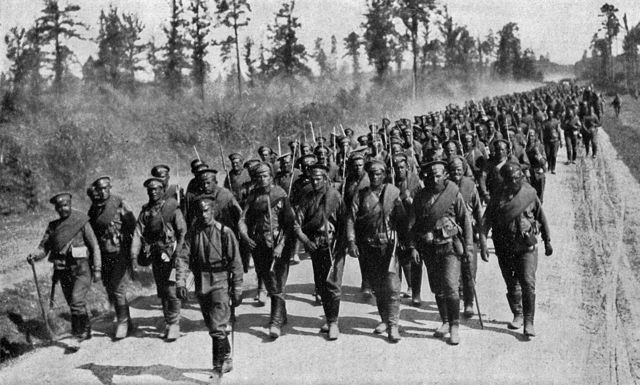
When Germany failed to immediately knock France or England out of World War I, the German high command ordered its troops to dig in on the Western Front. During 1915, the second year of the war, the German military focused exclusively on forcing Russia out of the fight.
Russia had already made some advances in Galicia, but that changed quickly as Germany secretly transferred large amounts of troops and materiel from the Western Front. In April 1915, as if out of nowhere, German artillery lit up the entire Eastern Front. Two-thirds of all German forces were now concentrated on the unsuspecting Russians.
Almost immediately, the Russian army was shattered. In a single engagement in May, an Austro-German offensive took 140,000 prisoners. A passing attempt was made at holding fortified positions around Warsaw, but these too had to be abandoned before the German advance. Thousands of pieces of artillery and millions of rounds were left behind in the retreat, compounding the already rampant shortages of both in the Russian army. With over a million troops lost or prisoners, the only option for the Russians was a massive withdrawal east, razing everything behind them as they went. In the process, Russia conceded all of Poland-Lithuania. Thirteen percent of all Russian subjects fell under German occupation. After 1915, Russia’s combat divisions had been reduced by one third.
The catastrophic losses seemingly stunned Germany even more than Russia. The German military command concluded if Russia wouldn’t surrender after the slaughter of 1915, it never would.
3The Winter War
1939-1940
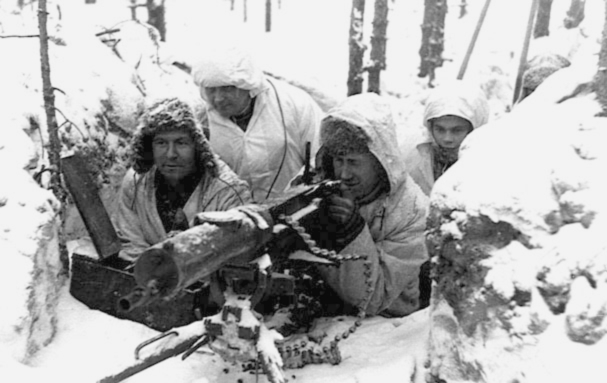
In 1939, the Soviet Union wanted control of Finland to create a buffer state. Finland wanted very much not to be a part of the Soviet Union. Despite the fact that the Red Army had more soldiers (five million) than the Finns had people (four million), the latter would prove to be a more powerful motivator.
Of course, it didn’t help that, with a strategy apparently based around suicidal overconfidence, the Soviet Union blundered into Finland unprepared for the rigors of prolonged arctic war. Which was strange, because if there were ever generals who should have understood such warfare, you’d think they’d be Russian.
Nevertheless, the Soviets’ black-painted tanks rumbled into Finland, where they made easy targets in the snowy landscape. Many Soviet soldiers marched into battle in khaki or green fatigues without proper cold weather gear
Finnish defenses amounted to a line of semi-fortified machine-gun nests bisecting the Karelian isthmus, which connects Finland and Russia. The bigger problem for the Soviet army, though, was its reliance on the isolated Finnish roads, where ambushing Soviet columns was like a game of Duck Hunt for Finnish snipers and anti-tank crews. The Soviets couldn’t effectively respond, since they lacked the skis the Finns used to disappear into the wilderness. Routinely outnumbered by insane margins, Finnish soldiers quipped: “So many Russians! Where will we bury them all?” Ultimately, weight of numbers alone overwhelmed the Finns. While Finland suffered some 70,000 casualties, the Soviets were forced to deploy over one million troops, of which 273,000 perished. Not exactly the message Stalin wanted to send at the outset of WWII.
2Operation Mars
1942
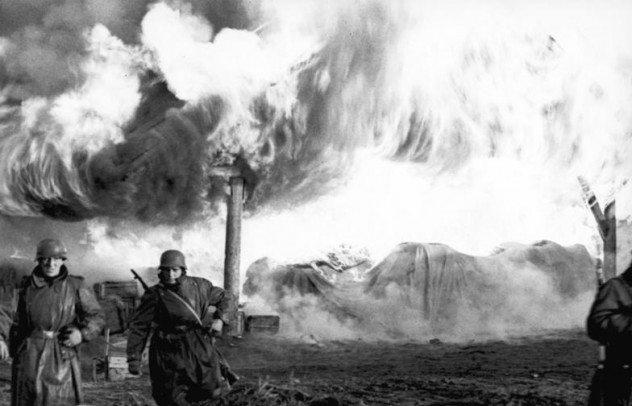
One of two major Soviet counteroffensives which followed Stalingrad, Operation Mars was such an incredible disaster that the Soviet Union simply omitted it from subsequent histories.
Like Napoleon, Hitler attempted an invasion of Russia, only to have it grind to a halt thanks to the defenders’ scorched earth tactics and the country’s brutal winter. By the fall of 1942, the Soviets had stabilized the Eastern Front and turned the German lines back from Moscow. However, a protrusion, resembling a dinosaur’s head and neck still jutted out from the German line, threatening Moscow. For Operation Mars, Soviet forces were to envelop the Germans, concentrate their force on the narrow neck, and cut the “head” off from German lines.
The Germans could never hope to hold the entire salient against the 700,000-strong army the Soviets had amassed. Rather than maintain a continuous line, they opted to heavily fortify and concentrate their forces at villages and sturdy farmhouses throughout the salient. This would prove a wise choice.
On the day the attack commenced, heavy snowfall and dense fog hampered the Soviet aerial bombardment and prevented their artillery from zeroing in on the German strongholds. In the chaos of the initial fighting, Soviet elements bypassed countless German strongholds entirely. As a result, pockets of resistance became interspersed throughout the Soviet ranks. The counterattacks from bypassed positions severed supply lines and prevented Soviet field commanders from communicating with one another.
Despite heavy tank losses, Georgy Zhukov, the operation’s planner, continued the fruitless frontal assaults for three weeks in a desperate bid to match the success of the simultaneous Soviet offensive at Stalingrad. As a result, the outnumbered German defenders killed, wounded, or captured 500,000 Soviet soldiers in less than a month, while losing only 40,000 of their own number.
1The Battle Of Grozny
1994-1995
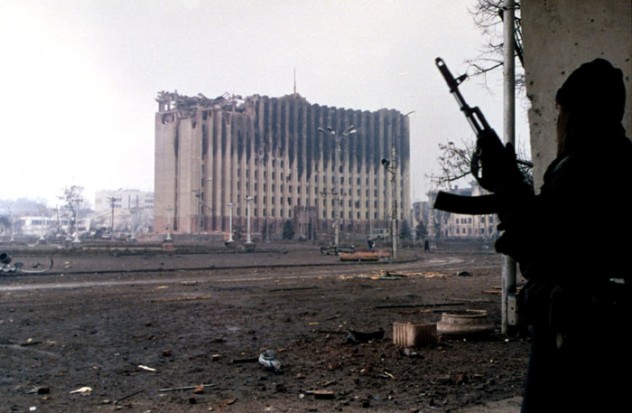
“Give me a unit of paratroopers and we will sort out the Chechens in a couple of hours,” said Russian general Pavel Grachev.
As it turned out, Russia gave Grachev 38,000 troops and hundreds of tanks to quash the Chechen separatist movement. And it still took him almost two years to end the war (by losing it).
Of the many Russian defeats during the First Chechen War, one of the worst came at Grozny, the de facto Chechen capital. Ever since Russia annexed their country in the 1870s, the Chechens had been longing for independence, so fierce resistance was expected in Grozny. Yet Grachev’s assault was hastily planned—basically, armored columns, complete with anti-aircraft vehicles to counter the nonexistent Chechen air force, were to converge on the city center from four sides. And that’s about as far as the planning went.
First, the initial air strikes to soften guerrilla resistance accidentally destroyed city roads the Russian tanks needed. An embedded journalist described the advancing Russian forces as “blind kittens” as Russian armored vehicles raced ahead of their infantry escorts, only to be immobilized and destroyed by Chechen rockets fired from high-rise windows. Most of the Russian soldiers lacked urban warfare training and refused to leave their personnel carriers when Chechen fighters opened fire. The lumbering Russian armor couldn’t maneuver in Grozny’s narrow streets and ground to a halt nearly end to end, like “a sausage,” as one Chechen put it. In just hours, the Chechens destroyed 400 Russian tanks and armored vehicles. And as many as 4,000 Russian soldiers may have been killed in the battle.
You can also find J. here.




